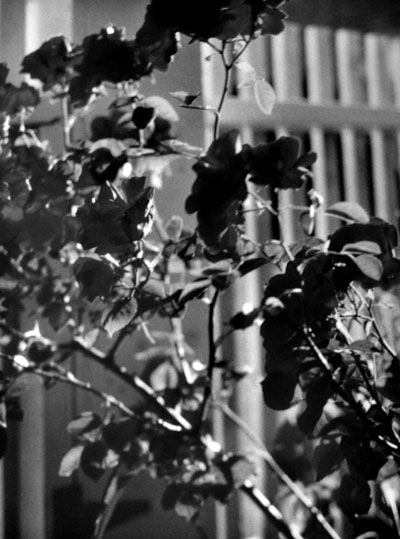Alejandro Cesarco
mumok
mumok

Alejandro Cesarco’s first museum exhibition in Austria wove together a tight web of associations. This web included the tradition of Conceptual art – a tradition which Cesarco clearly understands and posits himself as heir – along with the literary genres of the detective story and epistolary exchange. Through this wealth of references, he addressed questions of authorship and re-enactment as
well as the relationship between the producer and the viewer.
A video and slide installation in the exhibition space looked like an experiment since the projectors and projection screens were all attached to tripods, recalling cameras. The surrounding walls featured texts and framed photographs so that Cesarco’s presentation appeared as one hermetically sealed work. The video, with the programmatic title Methodology (2011), captures a discussion between a man and a woman speaking in Spanish. Sitting in front of a bookshelf, they talk about various love letters: not only those they have written to each other, including one that was obviously part of an exhibition, but also two fictional letters kept hidden in a desk by the narrator in the late Uruguayan author Juan Carlos Onetti’s novel Los Adioses (1954; Farewells, 1992).
The man and the woman pose questions about what is said, what is left unsaid and how a story unravels in the blind spots. But their dialogue also works like a meta-reflection about themselves. For instance, the woman says: ‘And again the conversation about love becomes a conversation about writing.’ This moment refers explicitly to Onetti and the Uruguayan poetess Idea Vilariño, who dedicated publications to each other; covers of their books accompany Cesarco’s video in his photographic diptych The Gift and The Retribution (2011).
Cesarco stages allusions, omissions and the obscure. Methodology is constantly interrupted by short sequences of black, empty screen. In the video, one of his protagonists admits blatantly: ‘Then again, in that staging which is so artificial, so planned, it’s absolutely necessary that the concealment be seen. In the sense of: “know that I am concealing something from you.“’ In these words, one might well hear an echo of Adorno’s belief: ‘that art works say something and in the same breath conceal it.’

Flowers found in crimes scenes 003_, 2011, 71 × 53 cm
The Enigma series – in which the detective story genre plays a central role – ponders the ‘enigmatic’ nature of art as outlined by Adorno in Ästhetische Theorie (1970; Aesthetic Theory, 1984). The slide installation The Reader (2011) could be found between black and white photographs, which, according to their titles, depict ‘flowers found at a crime scene’ in enlarged, cropped close-ups (Fragile Images That Keep Producing Death While Attempting to Preserve Life: Flowers Found in Crimes Scenes, 2011). There were also two wall text ‘footnotes’ (Footnote #4 and Footnote #19, both 2011), which cite, respectively, a passage from Hitchcock’s Vertigo (1958) and one from André Bazin’s Qu’est-ce que le cinéma? (1958–62; What is Cinema?, 1967–71). This work offered, via projected text and a synchronized soundtrack, excerpts from detective stories and theoretic reflections in English instead of Spanish. Analogies drawn between the detective and the reader were left open: ‘The detective genre is concerned with stories of writing and reading insofar as they are concerned with authoring (crime) and deciphering plots (investigation).’
What might have looked to viewers like a discussion about making and looking at art was marked by subtle irony. The projected texts – in a simple, clear typeface, occasionally changing colour from pink to light blue – were read by none other than Lawrence Weiner. With this collaboration, the artist seemed to be knowingly positioning himself more than invoking an authorial or patriarchal challenge.
As Weiner reads Cesarco’s script – ‘A letter arrives. A letter is talked about but never shown’ – he is referring to Cesarco’s Methodology. Like a dance of cross-references, the circle closes around the viewer. As they attempt to decode the connections, Cesarco weaves his story, only loosely following the rules of a detective story. He lays out his approach in a small publication, which ends with a telling remark: ‘Rules were meant to be broken’.
Translated by Dominic Eichler















